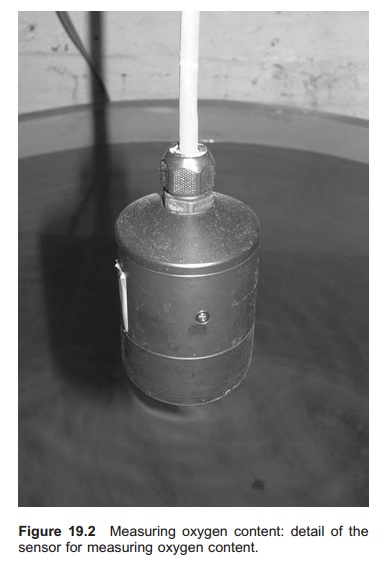Chapter: Aquaculture Engineering : Instrumentation and Monitoring
Measuring oxygen content of the water in Aquaculture
Measuring oxygen content of the water
The oxygen content may be measured either chemically or electronically. The normal chemical method is the so-called Winkler method which is a titration method, consisting of adding certain chemicals to the water and observing a colour change which will be directly related to the oxygen concentration.
When measuring oxygen concentration electronically, a sensor or probe is used. This can be constructed using a positively charged conductor (anode) and a negatively charged conductor (cathode) separated by an insulator (Fig. 19.2). In one design, an electrolyte is located around the electrodes (anode and cathode). A special membrane covers the electrolyte, keeping it in place and protecting it. The membrane is permeable to oxygen molecules. As there is a positive and a negative electrode, electrolysis will occur, and electrons will pass between the two electrodes. The magnitude of the electron transport is affected by the amount of oxygen in the electrolyte; this again

It is important to calibrate this type of instrument accurately. For some instruments it is necessary to calibrate for air pressure and temperature, while in others this is integrated. The electrolyte and the membrane or the complete sensor, must be changed at defined intervals. Since the membrane is very thin it is easy to break, care must be taken when handling it. Ageing of the membrane can be detected, because it becomes difficult to get stable results and the values fluctuate constantly. The membrane is also exposed to fouling, and must regularly be visually inspected and cleaned. If fouling occurs the oxygen values will normally drop in relation to the correct values.
Related Topics